October 3, 2009 - Exceptions to the ban would be in retail tobacco stores; outdoor places of employment; private places; private residences, except when used as a child care, adult day care or health care facility; and no more than 20 percent of hotel or motel rooms that are available to be rented to guests.
The ordinance defines a private place as any enclosed area to which the public isn't invited or in which the public isn't permitted, including but not limited to, personal residences or personal motor vehicles.
The measure is to take effect after notice of its passage has been published in the Topeka Metro News and a subsequent 60-day period passes. Shawnee County election commissioner Elizabeth Ensley said Thursday the ordinance is to be published Monday, meaning it would take effect December 4, 2009.
Topekan Gail Trembley said Thursday, October 1st she was starting a petition drive to reverse the smoking ban. State law enables opponents to submit to the city's governing body a petition, which must be accompanied by a proposed ordinance, seeking to appeal or amend the clean air ordinance. If the petition is legally valid, state law requires the council to adopt the accompanying ordinance within 20 days or give the public a vote on it within 90 days.
The ordinance calls for people who smoke in an area where smoking is prohibited to be fined $50 for the first violation, $100 for the second within 12 months of the first and $200 per violation for a third or subsequent violation within 12 months of the first two. It also sets a fine schedule for violations committed by the owner, manager or operator of public places or places of employment who permits smoking where it is prohibited. Those fines are $100 for the first violation, $250 for the second within 12 months of the first and $500 per violation for a third or subsequent violation within 12 months of the first two. Additionally, a business license or permit issued by the city may be suspended for a third or subsequent violation within a 12-month period.
Reference: Smoking ban petition started by Tim Hrenchir, The Topeka Capital Journal, 10/2/2009.
Kansas related news briefs: Kansas - cigarette makers fined, failed to pay into escrow accounts..; Kansas - fire safe cigarettes as of July 1, 2009..; Smokeless tobacco use by boys in Kansas on the rise..
Read more...
Bringing the World of Tobacco Control closer together..
Topeka, Kansas to ban public smoking indoors and at places of employment December 4, 2010..
Wisconsin - government anti-smoking programs cut from $15.3 million a year to $6.9 million..
 October 3, 2009 - Starting Thursday, October 1st smokers with health insurance who call the state Quit Line for help kicking their habit will get less help, the result of a 55 percent cut in state funding to smoking cessation and anti-smoking programs.
October 3, 2009 - Starting Thursday, October 1st smokers with health insurance who call the state Quit Line for help kicking their habit will get less help, the result of a 55 percent cut in state funding to smoking cessation and anti-smoking programs.
In spite of soaring state cigarette taxes, the Quit Line's funding was slashed by two-thirds - from $3.7 million a year to $1.2 million - as part of the broad cuts implemented in the 2009-11 budget signed by Gov. Jim Doyle to help solve the state's massive deficit. Total funding for anti-tobacco programs was cut from $15.3 million a year to $6.9 million.
The cuts follow a 75-cent increase in the cigarette tax on Sept. 1 that brought the state tax to $2.52 per pack, and also follows a $1-per-pack increase in 2008 - moves made to help solve budget deficits.
Maureen Busalacchi, executive director of SmokeFree Wisconsin, said more resources are needed by smokers motivated to quit by both the tax increase and a state smoking ban on bars and restaurants going into effect on July 5, 2010. "When people need the resources most, we'll be least able to help them," Busalacchi said.
The Quit Line previously offered four sessions of follow-up calls to state smokers who call seeking to kick the habit, along with two weeks of a free nicotine patch or nicotine gum, at a total cost of $323 for callers who use all those services, said Moira Harrington, spokeswoman for the University of Wisconsin Center for Tobacco Research and Intervention, which oversees the Quit Line.
The Quit Line, operated by a company in Seattle, still will offer the same level of service to smokers with no health coverage or with state Medicaid coverage for the poor, she said. But smokers with private health insurance now will receive one follow-up call and the nicotine replacement items, said Harrington, who couldn't rule out additional cuts in services. "It's not a decision we made lightly," she said. "We've just had to make a hard choice."
Dr. Michael Fiore, director of the center, said research showed more follow-up counseling sessions with smokers was more effective in helping them quit.
State Department of Health Services spokeswoman Stephanie Marquis said smokers with private health insurance still will be able to make repeat calls to the Quit Line. But now the responsibility is on the smokers to call, instead of the counselors making follow-up calls to the smoker. "This means we will make the best use of limited Quit Line resources and maximize access to smoking cessation services through private insurance," Marquis said
Other cuts to state tobacco control programs included: • Overall programs to help people quit smoking, including the Quit Line and programs aimed at pregnant mothers, fall from $5 million a year to $1.8 million; • Training and technical assistance for those working to reduce smoking drop from $1.5 million in 2009 to $505,000 in 2010;
• Anti-tobacco programs aimed at minorities drop from $1.3 million to $752,000 and programs aimed at teens will drop from $928,500 to $390,000; • Anti-smoking advertising falls from $835,000 to $430,000.
Busalacchi said she supports a bill by Rep. Jeff Smith, D-Eau Claire, that would provide more than $2 million in additional money for anti-tobacco efforts. The bill would do so by rolling back a recent increase in how much of the cigarette tax can be kept by wholesale tobacco sellers to cover the costs of collecting the tax for the state and placing tax stamps on cigarette packages.
A representative of the industry, which opposes the bill, could not be reached for comment late Wednesday.
Reference: State cuts Tobacco Quit Line funding despite tax increases by JASON STEIN (jstein@madison.com), Wiscopnsin State JOurnal, 9/30/2009.
Wisconsin related news briefs:
Wisconsin - tobacco taxes to go up tomorrow, Tuesday, September 1, 2009..;
U.S. - Midwest States smoking bans do not hurt business..;
Wisconsin Governor Doyle signs smoking ban..;
Wisconsin - legislature passes smoking ban in restaurants, bars and other businesses..;
Count Wisconsin as the 26th state to ban smoking..;
Wisconsin may be the 26th state to ban smoking in all bars and restaurants..;
Wisconsin - Increased Sales Tax Decrease in Smoking..;
Wisconsin's achieves the lowest adult smoking prevalence ever..;
The primary reason to increase the tax on tobacco is to get smokers to quit and dissuade kids from starting..;
Wisconsin cigarette tax and tax on other tobacco products to increase January 1, 2008..;
Wisconsin to Increase Tax on All Tobacco Products..;
Wisconsin voters overwhelmingly (2-to-1) favor upping cigarette taxes by $1.25 a pack..
Read more...
New York City - Mayor Bloomberg pushing ahead to ban smoking in city parks and beaches..

The mayor initially hedged when Health Commissioner Thomas Farley proposed the ban last month, saying enforcement would be difficult. But now Mayor Bloomberg says he's pushing ahead with a controversial plan to ban smoking at city parks and beaches, after earlier saying it needed more study.
"The public is overwhelmingly in favor of banning it in parks as well," Bloomberg told the Bay Terrace Community Alliance at a campaign forum in northeast Queens on Wednesday night. "So, you know, we'll get that done."
Bloomberg on Wednesday (October 1st) night: "If you're in the middle of a park by yourself in the middle of the night, I suppose nobody else is breathing that smoke." Bloomberg said Wednesday night. But if you're there with other people playing around, those people breathe it."
Controller William Thompson, Bloomberg's opponent, told the group later that he would pursue the ban if elected. Thompson: "The concept of a smoke-free park makes sense to me."
Reference: Mayor Bloomberg vows to snuff out smoking in parks, beaches by Adam Lisberg, NEW YORK DAILY NEWS CITY HALL BUREAU CHIEF, 10/1/2009.
NYC directly related: New York City - all retailers selling tobacco will be required to post warning signs..; New York City - to ask public opinion - smoking graphic warning signs; New York City - proposed pictorial warning signs to show the sickness and suffering caused by tobacco use.; New York City - may ban smoking in parks and beaches..; New York City - can't sue Internet cigarette retailers for lost taxes..; New CDC Chief Thomas R. Frieden, MD, MPH..; New York City Council ban candy-flavored tobacco, smoking outside of hospitals..; New York - city and state officials back off plans to crack down on cigarette black market..; New York City - nonsmokers exposed to cigarette smoke..; New York City - cigarettes more than $10- a- pack..; NYC can move forward with reservation cigarette lawsuit..; Michael Rubens Bloomberg - ELF Award winner 2008; NYC sues reservation smoke shops over bootlegging..; NYC Fights Smoking With Reality Images in Matchbooks..; NY City Can Proceed With Lawsuits Against 10 Online Cigarette Vendors..; NYC Warns Parents of Smoking Lawsuits...
Read more...
FDA Center for Tobacco Products - draft document issued..
October 2, 2009 - Draft Guidance: The Scope of the Prohibition Against Marketing a Tobacco Product in Combination with Another Article or Product Regulated under the Federal Food, Drug, and Cosmetic Act
Draft Document Issued on: September 30, 2009
From draft document: Two or more tobacco products are packaged together in a single package or as a unit.
o A pack of cigarettes is sold in a box, bag, or other container with a package of pipe tobacco.
Actual example: Camel Light cigarettes sold with a can of Camel SNUS..
Click on image to enlarge..
Center for Tobacco Products related news briefs:
FDA deflects challenge from Reynolds, Lorillard, others..
FDA - began collecting fees from nations tobacco companies..;
FDA - first steps in the role of tobacco regulation..
U.S. - flavored cigarettes illegal after Wednesday, September 22, 2009..;
FDA Moves Forward on Implementation of Tobacco Law..;
Dr. Lawrence Deyton to head FDA's Tobacco Center..;
U.S.- creating the FDA's Center for Tobacco Products..
U.S. FDA posts job for new tobacco czar..;
President Obama signs bill for FDA to regulate tobacco...
Read more...
Maternal Smoking - important risk factor in the development of psychotic experiences in their children..
 October 2, 2009 - Researchers observed an association between maternal, but not paternal, smoking during pregnancy and risk of psychotic symptoms in their offspring (children), consistent with accumulating evidence from animal models of adverse effects on brain development from in utero nicotine exposure.
October 2, 2009 - Researchers observed an association between maternal, but not paternal, smoking during pregnancy and risk of psychotic symptoms in their offspring (children), consistent with accumulating evidence from animal models of adverse effects on brain development from in utero nicotine exposure.
Nicotine has a negative impact on the developing adolescent brain..; Nicotine – in any form – not safe..
These findings suggest that risk factors for development of non-clinical psychotic experiences may operate during early development.
Researchers from Cardiff, Bristol, Nottingham and Warwick Universities studied 6,356 12-year-olds from the Avon Longitudinal Study of Parents and Children. All the children completed an interview for psychotic-like symptoms, such as hallucinations or delusions. Just over 11% of the children (734) had suspected or definite symptoms of psychosis.
The researchers observed a 'dose-response effect', meaning that the risk of psychotic symptoms was highest in the children whose mothers smoked the most heavily during pregnancy.
Future studies of how in utero exposure to tobacco affects cerebral development and function may lead to increased understanding of the pathogenesis of psychotic phenomena.
t is estimated that between 15 and 20 per cent of women in the UK continue to smoke during their pregnancy.
Dr Stanley Zammit, the lead author of the study, "In our cohort, approximately 19 percent of adolescents who were interviewed had mothers who smoked during pregnancy. If our results are non-biased and reflect a causal relationship, we can estimate that about 20 percent of adolescents in this cohort would not have developed psychotic symptoms if their mothers had not smoked. Therefore, maternal smoking may be an important risk factor in the development of psychotic experiences in the population."
PAPER: Maternal tobacco, cannabis and alcohol use during pregnancy and risk of adolescent psychotic symptoms in offspring. Stanley Zammit, PhD (zammits@Cardiff.ac.uk) Kate Thomas, BSc MSc Andrew Thompson, MA, MMedSci, MRCPsych Jeremy Horwood, BSc Paulo Menezes, PhD David Gunnell, PhD Chris Hollis, PhD DCH MRCPsych Dieter Wolke, Dip (Psych) PhD Glyn Lewis, PhD and Glynn Harrison, MD FRCPsych, The British Journal of Psychiatry (2009) 195: 294-300, Abstract & Full Text...
Reference: Smoking During Pregnancy Puts Children At Risk Of Psychotic Symptoms, Science Daily, October 1, 2009.
Additional papers: Neurotoxic effects of prenatal tobacco exposure on newborn neurobehavior; Smoking While
Pregnant or Breastfeeding The Impact of Nicotine, Smoking and Tobacco.
Read more...
FDA deflects challenge from Reynolds, Lorillard, others..
 October 2, 2009 - Marketing restrictions in the law giving the U.S. Food & Drug Administration (FDA) authority over tobacco do not violate free speech and serve a greater public health interest, the government said in a response to a legal challenge by two of the nation's largest tobacco companies, reported the Associated Press. (R.J. Reynolds, Lorillard, others file suit claiming law restricts communication..
October 2, 2009 - Marketing restrictions in the law giving the U.S. Food & Drug Administration (FDA) authority over tobacco do not violate free speech and serve a greater public health interest, the government said in a response to a legal challenge by two of the nation's largest tobacco companies, reported the Associated Press. (R.J. Reynolds, Lorillard, others file suit claiming law restricts communication..
Meanwhile, the FDA on Thursday began collecting millions in fees from the nation's tobacco companies to help fund the agency's newly granted authority to regulate the industry. The user fees, which will be collected quarterly, are based on each company's share of the U.S. tobacco market. (FDA - began collecting fees from nations tobacco companies..)
R.J. Reynolds Tobacco Co., maker of Camel cigarettes, and Lorillard Inc., which sells the Newport menthol brand, filed the federal lawsuit with several other tobacco companies in August to block those marketing restrictions, claiming the provisions violate their right to free speech and restrict their ability to communicate with consumers. It is the first major challenge of the legislation passed and enacted in June. The lawsuit, which named the FDA, the government and individual officials as defendants, does not challenge the decision to give the FDA authority over tobacco products.
The government gave a full-throated defense of the public health interest in the regulations. "The health risks associated with tobacco use and nicotine addiction are overwhelming and incontrovertible," the government wrote in its response. "Tobacco use is not only deadly but also addictive."
Eleven public health and consumer advocacy groups on Wednesday, October 1st also asked the federal court (UNITED STATES DISTRICT COURT FOR THE WESTERN DISTRICT OF KENTUCKY BOWLING GREEN DIVISION) to reject the lawsuit, saying the provisions are narrowly tailored to satisfy First Amendment constitutional requirements and is designed to end "decades of false health claims that have misled millions of smokers." Information submitted to the federal court: MEMORANDUM OF AMICI CURIAE.. (Amicus curiae (friend of the court), that refers to someone, not a party to a case, who volunteers to offer information on a point of law or some other aspect of the case to assist the court in deciding a matter before it. The information may be a legal opinion in the form of a brief, a testimony that has not been solicited by any of the parties, or a learned treatise on a matter that bears on the case. The decision whether to admit the information lies with the discretion of the court.)
The law that started to take effect last month gives the FDA authority over tobacco for the first time and lets the agency reduce nicotine in tobacco products, ban candy flavorings and block labels such "low tar" and "light." Tobacco companies also must put large graphic warnings over any carton images.
The companies said in their lawsuit that the law, which takes full effect in three years, prohibits them from using "color lettering, trademarks, logos or any other imagery in most advertisements, including virtually all point-of-sale and direct-mail advertisements." The complaint also says the law prohibits tobacco companies from "making truthful statements about their products in scientific, public policy and political debates."
The tobacco makers say the new mandated health warnings for cigarettes would relegate the companies' branding to the bottom half of the cigarette packaging, making it "difficult, if not impossible, to see."
Joining in the suit filed in U.S. District Court in Bowling Green, Ky., are National Tobacco Co., Discount Tobacco City & Lottery Inc., and Kentucky-based Commonwealth Brands, which is owned by Britain's Imperial Tobacco Group PLC.
Reference: FDA Deflects Challenge Says new tobacco regulation does not violate free speech; begins collecting fees, Convenience Stores / Petroleum (CSP) Daily News, 10/2/2009.
Center for Tobacco Products related news briefs:
FDA - began collecting fees from nations tobacco companies..;
FDA - first steps in the role of tobacco regulation..
U.S. - flavored cigarettes illegal after Wednesday, September 22, 2009..;
FDA Moves Forward on Implementation of Tobacco Law..;
Dr. Lawrence Deyton to head FDA's Tobacco Center..;
U.S.- creating the FDA's Center for Tobacco Products..
U.S. FDA posts job for new tobacco czar..;
President Obama signs bill for FDA to regulate tobacco...
Read more...
Florida - no jobs for tobacco users..
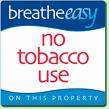 October 2, 2009 - Palm Beach County Tax Collector Anne Gannon has decided the butt stops here. She said Wednesday, October 1st she will no longer hire anyone who has regularly used tobacco products, saying smokers in her office stick taxpayers with paying for rising health-care costs.
October 2, 2009 - Palm Beach County Tax Collector Anne Gannon has decided the butt stops here. She said Wednesday, October 1st she will no longer hire anyone who has regularly used tobacco products, saying smokers in her office stick taxpayers with paying for rising health-care costs.
Existing smokers among her 240 employees get to keep their jobs, but are being "encouraged" to quit, Gannon said. But they will pay more for health insurance: She plans to increase what those employees pay toward their coverage by as much as 20 percent. Gannon said her goal is to cut down on rising health insurance costs and to encourage a healthier, more productive working environment.
Taxpayers pay $2.5 million a year toward health insurance for tax collector employees, a cost that rose 45 percent in three years, Gannon said. Job seekers will be required to submit an affidavit indicating they are non-smokers to go along with their job application to be considered for employment, according to the new policy. "We believe that smoking is the driver of our health care costs. A person who smokes has chosen to do that," said Gannon, a non-smoker who said both her parents died of smoking-related illnesses. "The public is really paying."
Critics say Gannon's new policy infringes on personal liberties. The move is "outright discrimination," said Sid Dinerstein, chairman of the Republican Party of Palm Beach County. "If you can pick on people because they smoke, you can pick on people because they eat fatty foods. … You can go down a very long list of telling people how they should live their lives."
It is well-established that smoking and other uses of tobacco cause cancer, heart disease and lung disease. Cigarette smoking leads to $96 billion a year in health care costs and more than 400,000 deaths annually in the United States, according to the Centers for Disease Control and Prevention.
Gannon said she did her legal research before enacting the policy. The Florida Supreme Court in 1995 upheld North Miami's ban at the time on hiring smokers. Gannon's new policy is patterned after other local government and business actions to phase out employee smoking.
The City of Boca Raton doesn't hire smokers for its police or fire departments or other union positions, and Sarasota County stopped hiring smokers in 2008. Broward County government workers who smoke this year face new surcharges that could add $520 a year to premiums deducted from employees' pay.
Not hiring smokers is a "positive step" that encourages people to give up smoking, said Brenda Olsen, CEO of The American Lung Association of Florida. "It is not a constitutional right for people to smoke," Olsen said.
Reference: Tax Collector's Office won't be blowing smoke New hires will have to pledge they don't use any tobacco products, by Andy Reid (abreid@SunSentinel.com), South Florida Sun Sentinel, 10/1/2009.
Related news briefs: County Refuses to Employee People that Use Tobacco Products..;
Read more...
FDA - began collecting fees from nations tobacco companies..
 October 1, 2009 - The Food and Drug Administration today began collecting millions in fees from the nation's tobacco companies to help fund the agency's newly granted authority to regulate the industry.
October 1, 2009 - The Food and Drug Administration today began collecting millions in fees from the nation's tobacco companies to help fund the agency's newly granted authority to regulate the industry.
The user fees, which will be collected quarterly, are based on each company's share of the U.S. tobacco market. The FDA will collect about $23 million for fiscal 2009. That will rise to $235 million in 2010 and grow to $712 million by 2019.
The FDA would not disclose the assessments for specific companies. Stifel, Nicolaus & Co. analyst Christopher Growe said in a note to investors that Henrico County-based Altria Group Inc., owner of market-leading Philip Morris USA, would be responsible for about 50 percent of the fees.
FDA spokeswoman Kathleen Quinn said the fees will be used to fund the Center for Tobacco Products, the agency's group tasked with regulating tobacco. The fees will pay for staffing, offices, systems that will be used to register products and outside contractors.
In June, President Barack Obama signed the law that allows the FDA regulate the industry. Its authority includes the ability to ban certain products, reduce nicotine in tobacco products and block labels such "low tar" and "light." Tobacco companies also will be required to cover their cartons with large, graphic warnings. The law doesn't let the FDA ban nicotine or tobacco outright.
The Congressional Budget Office estimated in June that the law would reduce the number of underage tobacco users by 11 percent by 2019 and lead to a 2 percent decline in smoking among adults.
Altria supported the legislation, while its chief rivals -- No. 2 Reynolds American Inc. and No. 3 Lorillard Inc., both based in North Carolina -- opposed it. The latter two have joined in a lawsuit with other smaller tobacco companies challenging specific marketing regulations of the law.
The nation's tobacco companies already pay $1.01 per pack that it sells for federal excise taxes, and the top cigarette makers also make yearly payments as part of the landmark 1998 master tobacco settlement agreement to reimburse states for smoking-related health care costs.
In that settlement, tobacco companies agreed to make about $206 billion in annual payments over more than two decades. Companies also make payments as part of legislation that ended the federal tobacco program, a quota program that limited and stabilized the amount of tobacco produced by farmers.
Reference: FDA starts collecting tobacco feesASSOCIATED PRESS - Richmond Times-Dispatch, 10/1/2009.
Center for Tobacco Products related news briefs:
FDA - first steps in the role of tobacco regulation..
U.S. - flavored cigarettes illegal after Wednesday, September 22, 2009..;
FDA Moves Forward on Implementation of Tobacco Law..;
Dr. Lawrence Deyton to head FDA's Tobacco Center..;
U.S.- creating the FDA's Center for Tobacco Products..
U.S. FDA posts job for new tobacco czar..;
President Obama signs bill for FDA to regulate tobacco...
Read more...
Ontario - launches lawsuit against Canadian tobacco manufacturers..
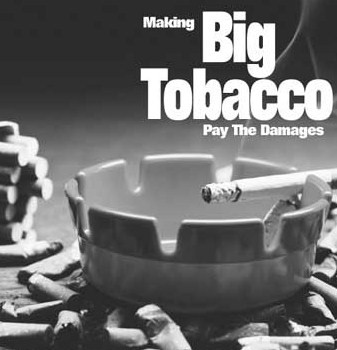 October 1, 2009 - The Ontario government yesterday, September 29th launched a $50 billion lawsuit against Canadian tobacco manufacturers allegedly to recover public money spent on health care made necessary by tobacco use. (Back on March 6, 2009 we reported that Ontario is looking to become the latest jurisdiction to go after tobacco companies for misrepresenting the health risks of smoking and costing the province billions of dollars.)
October 1, 2009 - The Ontario government yesterday, September 29th launched a $50 billion lawsuit against Canadian tobacco manufacturers allegedly to recover public money spent on health care made necessary by tobacco use. (Back on March 6, 2009 we reported that Ontario is looking to become the latest jurisdiction to go after tobacco companies for misrepresenting the health risks of smoking and costing the province billions of dollars.)
Attorney general, Chris Bentley, said in a press release that Ontario was ‘joining British Columbia and New Brunswick in initiating a lawsuit to recover health care costs from tobacco companies’.
The Ontario government released a statement reminding residents, “Smoking is the number one preventable cause of death in the province, killing 13,000 people a year - or 36 per day - and costs taxpayers $1.6 billion annually.”
Imperial calls lawsuit 'hypocritical' Imperial Tobacco Canada reacted angrily to the news of the lawsuit, saying it was stunned that a province in which close to 50 per cent of tobacco products purchased were illicit was targeting the legal industry while continuing to turn a blind eye to illicit tobacco sales. (Government of Ontario lawsuit is "hypocrisy", says Imperial Tobacco Canada, Newswire.ca, 9/29/2009)
Douglas Lennox, a Toronto lawyer who has been involved in several lawsuits against tobacco companies, told CBC News that Ontario's case may never go before a judge. That's because British Columbia's lawsuit against the tobacco companies is already well underway, with the trial scheduled to begin a little over a year from now.
Lennox: "If B.C. can win their trial, then you'll see a resolution for all of the other provinces shortly thereafter."
References: Ont. launches $50B tobacco lawsuit, The Canadian Press, 9/29/2009; Tobacco Companies Face £28 Billion Ontario Lawsuit, by Reuters, 9/29/2009.
Read more...
England - smoking rate falls again...
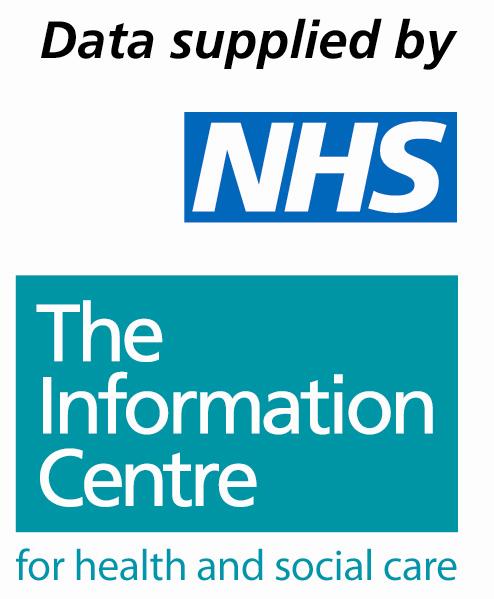 October 1, 2009 - Twenty one (21) percent of English adults reported smoking in 2007, down from 22 per cent in 2006 and 39 per cent in 1980, according to a report issued on Tuesday by the
October 1, 2009 - Twenty one (21) percent of English adults reported smoking in 2007, down from 22 per cent in 2006 and 39 per cent in 1980, according to a report issued on Tuesday by the
There was little difference between the reported smoking rates of men (22 percent) and women (19 percent) for 2007, but smoking rates varied considerably when broken down by age group, with the highest rate (32 percent) being recorded for the 20-24 group and the lowest (12 percent) for the over 60s.
On average, smokers consumed 13.1 cigarettes a day.
Key facts
* In 2007, 21 per cent of adults aged 16 and over in England reported smoking, compared with 22 per cent in 2006 and 39 per cent in 1980. As with previous years men are more likely to smoke than women (22 per cent compared with 19 per cent).
* Almost a third of pupils (32 per cent) aged 11 to 15 in England in 2008 reported having tried smoking at least once and 6 per cent were regular smokers (smoking at least one cigarette a week). Girls were more likely to smoke than boys; 11 per cent of girls have smoked in the last week compared with 8 per cent of boys.
* Around two thirds (69 per cent) of adults aged 16 and over in Great Britain in 2008/09 reported that they do not allow smoking at all in their home, an increase from 61 per cent in 2006. Four in five people (81 per cent) agree with the smoking ban in public places.
* Around 440,900 hospital admissions among adults aged 35 and over in England in 2007/08 are estimated to be attributable to smoking. This accounts for 5 per cent of all hospital admissions in this age group.
* Around 83,900 deaths (18 per cent of all deaths of adults aged 35 and over) in England in 2008 were estimated to be caused by smoking.
Reference: Statistics on Smoking, England 2009, The Information Center, NHS, 9/29/2009.
Read more...
United Kingdom - graphic warnings on cigarette packs as of October 1, 2009..
Click to enlarge:

October 1, 2009 - From the Thursday, October 1st the UK (United Kingdom of Great Britain and Northern Ireland) will be the first country in the European Union (EU) to introduce graphic picture warnings on all tobacco products. The new warnings, which include pictures of rotting teeth and lungs, throat cancer, and a 'flaccid cigarette', will replace the written warnings currently featured on packs, which were introduced in January 2003. Photo warnings will extend other tobacco products from October 2010.
from Amanda Sandford, ASH-UK:
Just to clarify: yes health warning legislation applies to the whole of the UK. Warnings on cigarette packs have in fact been in place for the best part of a year: they started to appear from 1 October 2008 and the industry was given 12 months to make sure that all cigarette packs carried the picture warnings. (ie from 1 Oct 2009 it will be illegal to sell packs without picture warnings). The industry has a further 12 months to ensure that picture warnings are included on all remaining tobacco products that are currently required to carry written health warnings (ie hand-rolling tobacco, pipe tobacco, cigars).
Canada was the first country to introduce graphic warnings, in 2001. One year later, research demonstrated that they had significantly impacted the country’s smokers; 31 per cent of ex-smokers reported that picture warnings had motivated them to quit, and 27 per cent reported they had helped them to stay smokefree.4 Graphic warnings are also now used on tobacco products sold in Australia, Brazil, Canada, India, New Zealand, Singapore, Venezuela, Thailand and Uruguay.Written warnings have been a huge success, according to new figures released today by the Department of Health. Since their introduction five years ago, more than 90,000 smokers have been motivated by the warnings to call the NHS Smoking Helpline (0800 022 4 332). Despite much progress over the past 10 years, which has resulted in 1.9 million fewer smokers since 1982, smoking continues to be the biggest killer in England and causes the premature death of over 87,000 people each year in England alone. The visual wake-up calls are expected to be even more effective than written warnings. Research suggests that warnings should be changed periodically to maintain effectiveness, and smokers are more likely to remember the damage they are doing to their health if they have seen a picture.
The visual wake-up calls are expected to be even more effective than written warnings. Research suggests that warnings should be changed periodically to maintain effectiveness, and smokers are more likely to remember the damage they are doing to their health if they have seen a picture.
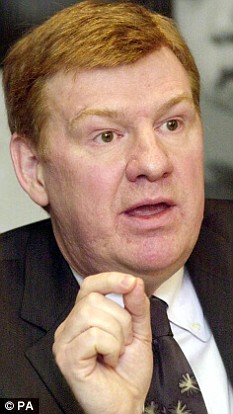 Chief Medical Officer, Sir Liam Donaldson, said: “I welcome the introduction of picture warnings on tobacco product packaging, which shows smokers the grim reality of the effects of smoking can have on their health. This will help to maintain the momentum of the increasing number of people who have given up smoking following England going smoke free in 2007. Written health warnings have encouraged many smokers to stop smoking. These new stark picture warnings emphasise the harsh realities of continuing to smoke. I hope they will make many more think hard about giving up and get the help they need to stop smoking for good.”
Chief Medical Officer, Sir Liam Donaldson, said: “I welcome the introduction of picture warnings on tobacco product packaging, which shows smokers the grim reality of the effects of smoking can have on their health. This will help to maintain the momentum of the increasing number of people who have given up smoking following England going smoke free in 2007. Written health warnings have encouraged many smokers to stop smoking. These new stark picture warnings emphasise the harsh realities of continuing to smoke. I hope they will make many more think hard about giving up and get the help they need to stop smoking for good.”Imperial Tobacco, the world's fourth largest international tobacco company, CEO Gareth Davis says he does not believe graphic warnings would change the behavior of smokers and he has seen no evidence that they have an impact. (Imperial Tobacco Group has today submitted its response to the UK Government document: "Consultation on the future of tobacco control", September 8, 2008)
More on graphic warnings: Campaign for Effective Health Warnings on Cigarette Packs..
References: STARK PICTURE WARNINGS ON TOBACCO PACKETS FROM 1ST OCT, Smokefree North West, 9/27/2009; Would you buy Brand X cigarettes? by Finlo Rohrer, BBC News Magazine, 9/30/2009; Cigarette packet picture warnings introduced, Medcines and Older People, NHS, 10/2/2008; Graphic images to target smokers, BBC, 9/26/2008.
A few related news briefs: Updated - England - tobacco display ban - the Lords got it right..; EU - planning a new study aimed at developing better graphic images..; Gruesome Photos on British Cigarette Packs..; British considering banning logos on cigarette packs, other measures..
Read more...
San Francisco - cigarettes cost a little more starting today, October 1, 2009..
 October 1, 2009 - Smokers will have a new incentive to quit starting Thursday, October 1st when the cost of a pack of cigarettes in San Francisco increases 20 cents. Money generated from the new city fee will pay for cleaning up cigarette butts that are illegally discarded on streets and in gutters, Mayor Gavin Newsom said Tuesday.
October 1, 2009 - Smokers will have a new incentive to quit starting Thursday, October 1st when the cost of a pack of cigarettes in San Francisco increases 20 cents. Money generated from the new city fee will pay for cleaning up cigarette butts that are illegally discarded on streets and in gutters, Mayor Gavin Newsom said Tuesday.
Smokers already pay an 87-cent state tax for cigarettes. A federal tax increased 62 cents April 1, bringing the total to $1.01. Some packs cost as much as $7 in The City. (30.6 million approximate number of cigarette packs sold in San Francisco in 2008, $3.46 Cigarette tax in Rhode Island -the highest in the nation.)
Newsom originally proposed a 33-cent fee, but reduced it to 20 cents after a final study found that the cost to clean up butts was lower than expected. The City spends $7.5 million annually on cleanup, a Health Economics Consulting Group study said.
Businesses and residents aren’t pleased with the price increase. Some smokers say the market, not the government, should dictate cigarette prices. Business owners fear that folks will travel outside The City for their packs — or, at least, will stop shopping at their store — due to the added fee. “It’s no good. We’re going to lose business,” said Ali Mohammed, 26, the manager of New York Tobacco on Grove Street near the Civic Center. Not only will sales decrease, Mohammed said unwitting customers will blame shopkeepers for the price hike.
The Board of Supervisors unanimously embraced the new fee in July as a way to help The City close one of its largest deficits in history.
Newsom said Tuesday that California is 32nd in the nation in tobacco taxes. The last state tax increase was in 1998, he said. “The fact is, taxpayers shouldn’t be burdened with the cost of [cleaning up cigarette butts],” Newsom said, adding that the butts account for the most litter on streets and beaches nationwide.
Under state law, San Francisco cannot tax cigarettes, but it can charge a fee to recoup costs incurred by trash cleanup.
If you thought Cigarette Butts Everywhere Were Bad Wait Until Discarded SNUS Bags..
Newsom is also considering a new fee on large retailers who sell calorically sweetened beverages such as soda, saying studies show that they cause obesity-related diseases that weigh on city health care costs.
Reference: Smoking fee burns businesses by: Mike Aldax (maldax@sfexaminer.com), San Francisco Examiner, 9/30/2009.
San Francisco related news briefs:
San Francisco can enforce its ban on tobacco sales in drugstores..;
San Francisco - fight about selling tobacco products in drugstores has flared up..
San Francisco - Judge threw out a Walgreens attempt to stop the ban of tobacco sales in pharmacies..;
Philip Morris appeals tobacco ban at San Francisco pharmacies;
Federal Judge Denies Bid To Stop San Francisco Pharmacy Tobacco Ban..;
Philip Morris USA request stop in San Francisco's ban on tobacco sales by pharmacies..;
San Francisco - cigarette sales rise sharply in c-stores..;
San Francisco files brief to oppose bid by PM USA to block the banning of tobacco sales in pharmacies..;
Philip Morris challenges San Francisco pharmacy tobacco ban..;
Walgreen: San Francisco’s Tobacco Ban Is Unfair..;
San Francisco - All Tobacco Products Banned in All Pharmacies..;
San Francisco critical vote - bar tobacco sales pharmacies..;
SAN FRANCISCO Ban on tobacco at drug stores sought...
Read more...
Northern Mariana Islands - bans smoking in most public areas..
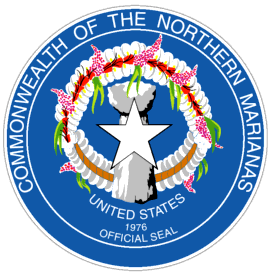 September 30, 2009 - Gov. Benigno R. Fitial signed into law yesterday a measure that bans smoking in virtually all areas in the Commonwealth of the Northern Mariana Islands (CNMI), except in private residences, most private bars, casinos, and departure terminal of airports.
September 30, 2009 - Gov. Benigno R. Fitial signed into law yesterday a measure that bans smoking in virtually all areas in the Commonwealth of the Northern Mariana Islands (CNMI), except in private residences, most private bars, casinos, and departure terminal of airports.
(Saipan is the largest island and capital of the United States Commonwealth of the Northern Mariana Islands (CNMI), a chain of 15 tropical islands belonging to the Marianas archipelago in the western Pacific Ocean. A self-governing U.S. territory.)
With the governor's enactment of the Smoke-Free Air Act of 2008, smoking is now prohibited in government facilities, schools, places of employment, vehicles and public places-a development that was hailed by health advocates, non-smokers, and even smokers who want to quit.
The sweeping smoking ban law means if any member of the Legislature, for example, wants to smoke cigarettes outside, he or she needs to be at least 26 feet away from the legislative building's doorway entrance or exit on Capital Hill. Smoking is not allowed within 25 feet of any doorway entrance or exit to a government facility or building.
Violators face a fine of up to $200 and completion of a mandatory tobacco prevention and/or cessation course, while owners of places where the violation occurs face a fine of up to $500 and revocation of a business license.
Fitial, a non-smoker, has long hailed private and public entities that have volunteered to ban smoking in their premises even before the enactment of any law prohibiting smoking.
Reference: No-smoking bill now a law Before you light that cigarette, think again by Haidee V. Eugenio, Saipan Tribune, 10/1/2009.
Read more...
Korea - sets target to reduce smoking 10% in 5-years..

September 30, 2009 - As part of an anti-tobacco initiative agreed to last week by countries in the Western Pacific region, the Korean government has set a target of reducing the nation's smoking rate by 10 percent over the coming five years. Tobacco products will see steep tax increases - up to 60 percent - as this has been proven to be one of the most effective ways to combat smoking.
Sixtieth meeting of the Regional Committee for the Western Pacific, 21–25 September 2009, Hong Kong (China). To strengthen the fight against smoking, the Regional Committee for the Western Pacific, WHO's governing body in the Region, endorsed the Regional Action Plan (2010–2014) for the Tobacco Free Initiative, which is designed as a guide for the development and implementation of national action plans on tobacco control. The WHO Framework Convention on Tobacco Control (FCTC) and the Regional Action Plan 2005-2009 have provided the framework for action to curb the tobacco epidemic in countries. Encouraging progress has been made that needs to be sustained in the years to come. (WHO urges countries to stand firm against tobacco manufacturers' wooing tactics.) Tobacco Free Initiative Regional Action Plan 2005-2009; Tobacco Free Initiative Regional Action Plan 2010-2014.
One third of the world's smokers reside in the Western Pacific Region, where it is estimated that two people die every minute from a tobacco‑related disease.
The World Health Organization has helped member states fighting against the smoking issue by suggesting five-year plans. The pact signed last Wednesday, September 23rd contains the updated version of a 2008 package of policies to reduce the demand for and consumption of tobacco products.
The package includes: monitor tobacco use and prevention policies; protect people from tobacco smoke; offer help to quit smoking; warn about the dangers of tobacco; enforce bans on tobacco advertising, promotion and sponsorship, and raise taxes on tobacco.
As the WHO points out, the tobacco industry's lobbying activities and partnership with governments, policymakers and researchers is one of the biggest obstacles in tackling the smoking issue, all member countries should launch national plans based on monitoring indicators and methods set by the international health organization.
According to WHO, the Western Pacific is the only region where all eligible parties have ratified the WHO Framework Convention on Tobacco Control, which was adopted at the World Health Assembly in 2003.
But that's probably because it's a bigger problem here than in other parts of the world.
"The Western Pacific region has the greatest number of smokers, among the highest rates of male smoking prevalence, and the fastest increase of tobacco use uptake by women and young people, in comparison with the other five WHO regions," said the pact.
In the preface of the initiative, the WHO also reaffirmed that smoking is "the leading preventable cause of death globally. More than 5 million people die worldwide from the effects of tobacco every year - more than from HIV/AIDS, malaria and tuberculosis combined.
The Korean nation's smoking rate had been falling since 2005 when the government signed the treaty on tobacco control and started to launch no-smoking campaigns. After toughened measures were taken on smoking, the adult smoking rate steadily decreased from 57.8 percent in 2004 to 52.3 percent in 2005, 44.1 percent in 2006 and 42 percent in 2007. But the figure hovered above the 40 percent range recently and started to increase from the second half of last year, according to the latest report in July.
People's financial pressure caused by the global economic crisis has been suggested as one of the main reasons for the increase. Health officials say, however, the slight increase seems to be driven more by the weakening effectiveness of related policies.
"During the early period of smoking regulations, the smoking rate dropped sharply. But those measures are losing momentum after five years and we plan to overhaul the current policies," said a ministry official.
Reference: Plan aims to cut smoking rate 10% by Lee Ji-yoon (jylee@heraldm.com), The Korea Herald, 9/30/2009.
South Korea - some related news briefs:
Korea - stricter regulation of the tobacco industry coming..;
South Korea - tobacco imports surge 396-fold over 10-years..;
Korea - slight increase in men smoking.. ;
South Korea - anti-tobacco campaign - body painting..;
Korea - smoking ban just about everywhere by end of 2009..;
Tobacco marketing in South Korea has been deliberately aimed at girls and young women..;
Korea - smoking rates fall for men and women...
Read more...
Kazakhstan - total ban on smoking in public places starting October 9, 2009..
![]() September 30, 2009 - Kazakhstan's government said Tuesday, September 29th it would impose a total ban on smoking in public places and raise the drinking age to 21, a rare step in the hard-drinking, heavy-smoking former Soviet Union.
September 30, 2009 - Kazakhstan's government said Tuesday, September 29th it would impose a total ban on smoking in public places and raise the drinking age to 21, a rare step in the hard-drinking, heavy-smoking former Soviet Union.
Health ministry spokeswoman Agmagul Abenova: "We are now following the recommendations of the World Health Organization, according to whose data more than 30,000 people die every year in Kazakhstan from smoking. We also continue to struggle against alcoholism, and therefore have introduced new regulations against it." Kazakhstan's drinking age was previously 18.
The new regulations, published in Kazakh newspapers on Tuesday, come into effect October 9 2009.
Kazakhstan already bars people from smoking in public venues, such as stadiums and on public transport, but the new rules extend the ban to the Central Asian country's notoriously smokey bars and nightclubs.
Although many European nations have public smoking bans, few ex-Soviet countries have followed suit, and none besides conservative Tajikistan have raised the legal drinking age.
Kazakhstan's smoking ban does not match the strictness of neighbouring Turkmenistan where former dictator Saparmurat Niyazov barred smoking even on the streets.
Alcoholism and smoking-related illnesses are a major health problem in the former Soviet Union, which saw a huge decline in average male life expectancy following the collapse of Communism nearly two decades ago. Kazakhstan Institute of Management, Economics and Strategic Research (KIMEP) went smokefree in August 2009.
Kazakhstan Institute of Management, Economics and Strategic Research (KIMEP) went smokefree in August 2009.
Kazakhstan restricts tobacco marketing freedoms by Laurence Walker..
Tobacco in Kazakhstan..
Related news brief: BAT helping Kazakhstan with program to prevent minors from smoking...
Reference: Kazakhstan bans public smoking, raises drinking age, Agence France Presse (AFP), September 29, 2009.
Read more...
People's Republic of China celebrates its 60th anniversary starting October 1, 2009..
 September 30, 2009 - Local governments have been stepping up enforcement of non-smoking laws to guarantee "security" in the weeks before the 60th anniversary.
September 30, 2009 - Local governments have been stepping up enforcement of non-smoking laws to guarantee "security" in the weeks before the 60th anniversary.
China has approximately 350 million smokers and a growing army of young people are picking up the habit, it added. Half of all male Chinese smoke.
China is the largest producer and consumer of cigarettes in the world with up to a million people dying of smoking-related diseases each year. This figure could rise to up to three million by 2050.
China is the world’s heaviest smoker. The China National Tobacco Company (CNTC), a constituent of the government-run China State Tobacco Monopoly Administration, is the largest tobacco company in the world, and Chinese constitute one-third of all the world’s smokers. Also, the country’s tobacco industry accounts for about 8% of total government revenues, according to the World Bank, and health experts and global economists are curious: can the Chinese government kick the habit?
China’s current 40% tobacco tax (calculated as 40% of the total retail price) is considerably lower than in other countries, which average about 65%. Experts say the Chinese government has been reluctant to raise the tobacco tax because the increase could threaten not only revenue for the CNTC, but also the estimated 4 million Chinese who work either on farms or in factories and rely on the tobacco industry for their livelihood.
The World Bank estimates that in developing countries, such as China, where people have less disposable income, a 10% increase in the price of cigarettes would translate on average into an 8% drop in cigarette consumption. That’s good news for governments, since, in the short to medium term at least, they can earn more tax revenue, even as cigarette consumption declines — reaping both fiscal and public-health benefits.
Nearly 60 percent of Chinese men smoke and China consumes more than 37 percent of the world's cigarettes.
50 million Chinese children, mostly boys, will die prematurely from tobacco-related diseases.
From the Boston Globe a collection of images from the past several weeks of people around China preparing to celebrate their National Day.
Read more...
Latvia - BAT shuts down tobacco production plant in Riga..
 September 29, 2009 - British American Tobacco (BAT) Latvia will shut down its production plant in Riga this week and lay off 223 employees. The company says this is because of excise tax hikes in the last two years that has led to a flourishing of the black market (illegal, illicit, contraband).
September 29, 2009 - British American Tobacco (BAT) Latvia will shut down its production plant in Riga this week and lay off 223 employees. The company says this is because of excise tax hikes in the last two years that has led to a flourishing of the black market (illegal, illicit, contraband).
“Comparing the first six months this year with the same period last year the production volumes have decreased by 64 percent. Today the factory uses less than 20 percent of its capacity,” the company said in a press release, adding that black market sales on duty-unpaid cigarettes constitute more than 36 percent of entire the tobacco market in Latvia.
“Today’s reality is that unfortunately we have to make a painful decision — we are proposing to restructure the company, to close down the factory and to decrease the number of employees in the commercial unit. Every excise tax increase leads to the danger of further development of organized crime and reduction of the number of legal workplaces,” Peter Halacz, chairman of the management board of BAT Latvia said in the press release.
Excise tax increases during recent years resulted in significant cigarette price rises causing illicit trade to grow rapidly. Within the past two years the legal cigarette market has shrunk by 40 percent, affecting the low price segment in particular.
“The overall economic situation in the country has just intensified the negative effect. In this situation many consumers, especially with low income, tend to look for cheaper alternatives choosing duty-unpaid cigarettes instead of legal products,” the release said.
The loss of the factory will be a bitter pill to swallow for the government, which has until now done little to control the import of illegal cigarettes. BAT Latvia is one of Latvia’s major taxpayers, paying 40 million lats (€57 million) in 2008.
Marita Jansone, press spokesperson for BAT Latvia told Baltic Reports however that the government is moving in the right direction with its recent clampdown on cigarettes crossing the border between Russia and Belarus.
“The Latvian government is aware of the problem. The recent changes in the legislation decreasing the number of legally imported cigarettes from the third countries — instead of 200 cigarettes only 40 allowed — is the first step towards the direction to change the situation,” she said.
Despite BAT’s assertion that duty-unpaid cigarettes are to blame for the closure, the factory was traditionally made for export. About 60 percent of all production in Riga factory is for export, both inside and outside the EU, the company said. Brands manufactured in the Riga factory are Kent and Vogue.
Jansone told Baltic Reports that Production from the Riga plant would be moved to other plants in Western Europe.
The cigarette factory, located at 58 Miera, has been there since 1912. It had previously been called Rīgas Tabakas Fabrika and before that Maikapars Tabakas Fabrika.
BAT has 49 cigarette factories in 41 countries, producing some 715 billion cigarettes in 2008.
Latvia: anti-smoking measures New steps being taken to reduce high levels of smoking, The Oxford Health Alliance, 10/24/2008.
Reference: BAT closes its Latvian factory by Adam Mulle, Baltic Reports, 9/29/2009.
Read more...
Croatia - backs down (loosens) smoking ban..
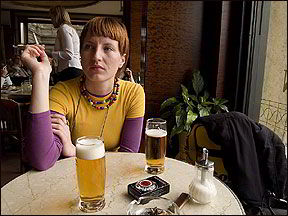 September 29, 2009 - The Croatian government moved on Thursday, September 10th to loosen a controversial public smoking ban. Now Croatia has made a U-turn on a law banning smoking in public after buckling to pressure from cafe and restaurant owners who told the government it was ruining their businesses.
September 29, 2009 - The Croatian government moved on Thursday, September 10th to loosen a controversial public smoking ban. Now Croatia has made a U-turn on a law banning smoking in public after buckling to pressure from cafe and restaurant owners who told the government it was ruining their businesses.
The parliament on Thursday, September 24th adopted an amended law that again allows smoking in cafes and restaurants in specially designated smoking zones covering no more than a fifth of any premises. The remaining four-fifths must be kept for non-smokers. Cafes smaller than 50 square metres (538 square feet), however, will be allowed to decide whether to become a smoking or non-smoking establishment after meeting certain criteria.
Ever since the law banning smoking in all public places was introduced in May, managers of cafes and restaurants have pressed the government to amend it.
Zlatko Puntijar, head of the National Association of Bar and Restaurant Owners, hailed the move which followed talks between his group and the Ministry of Health. "The recession already took its toll and the winter would have been a disaster," for the sector, Puntijar told AFP. "During summer cafes and restaurants had terraces that saved them."
Officials have said the law was aimed at protecting non-smokers, who make up 68 percent of the country's population of 4.4 million. "I would have been happy if these amendments did not have to be made," head of the National League Against Cancer Damir Eljuga told AFP. "However, I understand that due to the economic situation the government wanted to save some jobs."
In Croatia, tobacco is blamed for killing some 10,000 people each year while an additional 3,000 die from passive smoking, according to the health ministry. Annual health costs in treating the consequences of smoking are estimated at 422 million euros (619 million dollars).
The population remains split, however, regarding recent developments. "I'm glad because, regardless of health, there was no income. Smokers are better consumers," said one man named Josip who runs the modest Ceker cafe in downtown Zagreb. "Ceker will be for smokers," Josip said estimating that since the ban was introduced his income had dropped by 30 percent. He believed it would have been more if he had not had some tables in front of the cafe. "Cigarettes are not good but everyone should have to right to decide for himself," said cafe regular Predrag Kovac, lighting a cigarette.
But not all cafe owners have been opposed to the initial ban. "After some grumbling, people who have the habit of going out would have continued to do so," said Visnja Barjaktarevic who runs the upmarket Argentina Cafe in Zagreb. "If it can work abroad why it could not work in Croatia?" Morena Tolj, sipping her coffee outside the cafe, echoed her view. "It's a shame that they ceded to pressure. Smoking ban works perfectly well in other countries like in France and Italy."
But some smokers were grateful for the change in policy. "It was a real torture while the worst was in nightclubs," claims Vanda Mrsic, a designer, who smokes two packs a day. "Being a heavy smoker, I preferred to stay at home than to go out and abstain."
The Balkans are home to Europe's most inveterate smokers, with 30 to 40 percent of all adults hooked on a habit, which is considered a major cause of premature death, according to the World Health Organization.
Reference: Croatia backs down on smoking ban by Lajla Veselica, Agence France-Presse (AFP) - Yahoo New, 9/25/2009.
Croatia - related news briefs:
Croatian government gives in loosens public smoking ban..;
Croatian coffee shop owners looking for break from smoking ban...
Croatia - adjusting to new smoking ban..;
Croatia begins enforcing smoking ban on May 6, 2009..;
Croatia cigarette prices to go up April 1, 2009...;
Croatia - ban in smoking in public places goes in effect..,
Croatia - A ban on smoking went into effect on October 27, 2008..;
Croatia Aims at More Stringent Anti-smoking Laws...
Read more...
Cuba Seeks World Heritage Designation for Cigar-Factory Readers..
 September 29, 2009 - They’re called “cigar-factory readers” and for almost 150 years they have entertained the workers who hand-roll cigars in factories all over Cuba.
September 29, 2009 - They’re called “cigar-factory readers” and for almost 150 years they have entertained the workers who hand-roll cigars in factories all over Cuba.
The Cuban government has suggested that these unique readers be designated as part of the world’s Intangible Cultural Heritage that the U.N. Educational, Scientific and Cultural Organization will vote on, together with another 110 candidates, at a the meeting to be held in Abu Dhabi beginning next Monday.
Cigar-factory readers stand on a platform and read to their co-workers, often for their education, though time is also allowed for horoscopes, sexology, novels and kitchen recipes.
Documents show that the custom began in December 1865 when a learned magnate called Nicolas de Azcarate decided to provide entertainment for the workers during their tedious job of hand-rolling cigars hour after hour, and at the same time teach them about progress and reformist ideas. In just six months the example spread across the island and more than 1,000 reader jobs were created. The workers chose whoever among them had the best enunciation and raised the money to pay the selected reader themselves, Zoe Nocedo, director of the Old Havana Tobacco Museum, told Efe.
In 1886 Spain’s colonial Captain General of the Island, Francisco Lersundi, pressured by the conservative bourgeoisie, banned the custom with the argument that is “makes workers undisciplined and they stop paying attention to their work,” but in 1890 it was reestablished, this time forever, Nocedo said.
The birth of radio could have put an end to the reader, but the custom was so deeply rooted that the factories alternated, as they do today, periods of reading with radio programs.
The readers nowadays are state employees with an enviable status: they read 90 minutes a day and spend the rest of the time preparing new readings or debating with the workers the meaning of what they have heard. Standing on a platform with a microphone heard throughout the factory, Jesus Pereira, 44, entertains his fellow-workers by reading to them in three sessions: the first two obligatorily dedicated to the press and the third to novels or self-help books.
Pereira is proud of having read to his 630 fellow workers at the prestigious Partagas factory from novels like “The Da Vinci Code” and “The Count of Montecristo,” and says that detective and suspense novels are the ones they like best.
Like all cigar-factory readers – there are 213 on the island – he had a 30-day trial to win the favor of his demanding audience and get those tobacco knives banging loud and strong.
Reference: Cuba Seeks World Heritage Designation for Cigar-Factory Readers by Javier Otazu, Latin American Herald Tribune, 9/29/2009
Read more...
Bulgaria - Cigarette excise duties will be increased next year..
 September 29, 2009 - The prices of cigarettes in Bulgaria will increase drastically in 2010 over the planned raise in excise duty. The Deputy Finance Minister, Vladislav Goranov, said for Darik Radio that in the Budget 2010 project is foreseen a excise of EUR 76 (110.59 USD) per 1 000 cigarettes.
September 29, 2009 - The prices of cigarettes in Bulgaria will increase drastically in 2010 over the planned raise in excise duty. The Deputy Finance Minister, Vladislav Goranov, said for Darik Radio that in the Budget 2010 project is foreseen a excise of EUR 76 (110.59 USD) per 1 000 cigarettes.
This is a 46% increase compared to the present levels, which will affect the end prices, too. A pack of the most common Bulgarian cigarettes, Victory, will cost at least BGN 1,5, if the excise rise affects the price formation. In this way, a pack of Victory will cost nearly BGN 5 (3.72081 USD).
The business expects an increase in the excise between EUR 52 (75.6804 USD) and EUR 64 (93.1404 USD) for 1 000 cigarettes, because the previous government promised them so.
“The minimal excise in the European Union is EUR 64 for 1 000 pieces. The Bulgarian government would offer higher, because currently the country has the highest heart deceases death rate in the EU”, Goranov said. (EU wants higher tax on tobacco products..)
Another argument for the excise increase is the expected bigger budget incomes. However, the exact rise is still being calculated. Goranov explained that in other EU countries the excise on cigarettes was higher. He gave as an example Germany, where it is EUR 120-130 for 1 000 cigarettes.
Reference: Bulgaria Smokers to Pay Drastically More For Cigarettes in 2010, Novinite.com - Sofia, 9/28/2009; Bulgaria raising cigarette tax to curb smoking, Reuters - India, 10/1/2009.
Bulgaria related news briefs:
Bulgaria - cigarette contraband, government loses BGN 920M yearly..;
Bulgaria - one third of the tobacco products sold are illicit..;
Bulgaria - new government to speed-up Bulgartabac sale..;
Bulgaria - Fake Victory Light cigarettes..;
Bulgaria's tobacco monopoly may be up for sale..;
Bulgarian lawmakers vote to ban smoking in all publc places from June 2010..; Bulgarian tobacco company Sofia-BT exports increase by 541 percent..;
Does Russia own Bulgaria's tobacco monopoly, Bulgartabac..;
EU percent of adults smokers -highest Greece 1 , Bulgaria 2.. - lowest Slovenia..;
Bulgaria - 1 in 3 youths smoke / half of pregnant women smoke..;
PMI training Bulgarian custom officers to stop cigarette smuggling..;
Philip Morris International (PMI) was truly happy they had been back in the Bulgarian cigarette market for a year and had already had 6.8% of market..;
WHO FCTC Protocol to Prevent Illicit Trade in Tobacco Products Won't Be Completed Until End of 2010..;
WHO Report on the Global Tobacco Epidemic 2008..;
Bulgaria Enters 2009 with Cigarette Prices Hike...
Read more...
New Zealand - graphic warnings cigarette maker selects less offensive images..
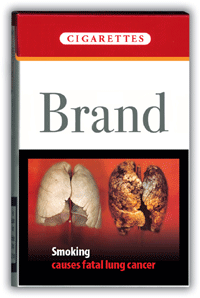 September 29, 2009 - British American Tobacco (BAT) today, September 28th rejected claims it is undermining the law by not following regulations on the use of graphic warnings on cigarette packets.
September 29, 2009 - British American Tobacco (BAT) today, September 28th rejected claims it is undermining the law by not following regulations on the use of graphic warnings on cigarette packets.
Researchers at Otago University said a new study of bought and discarded cigarette packs showed the regulations were not being met. Graphic warnings became mandatory in August 2008 and tobacco companies are required to evenly distribute various images over all cigarette packs.
Otago marketing professor Janet Hoek said the most offensive graphics were printed less frequently than other "less disturbing" images. BAT today rejected the findings. British American Tobacco's graphic health warnings meet all legal requirements," a spokeswoman said. "The Ministry of Health has not raised any concerns with us in this regard."
British American Tobacco's graphic health warnings meet all legal requirements," a spokeswoman said. "The Ministry of Health has not raised any concerns with us in this regard."
Dr Hoek said use of "less offensive" graphics, including images of a diseased mouth or eye, undercut the law and public health policy. "Tobacco companies have made it clear they dislike the new regulations on graphic health warnings, and these findings suggest they may be trying to minimise the impact of the new law."
Dr Hoek said tobacco companies should be required to submit the warnings' print run information.
PAPER: Distribution of new graphic warning labels: Are tobacco companies following regulations? Nick Wilson, Jo Peace, Judy Li, Richard Edwards, Janet Hoek, James Stanley and George Thomson, University of Otago, Tobacco Induced Diseases 2009, 5:14, Full Paper...
About 5000 New Zealanders die of smoking related illnesses each year. More than 700,000 New Zealanders smoke, nearly half of Maori smoke.
Reference: Tobacco companies undermining law - researcher, Otago Daily Times, 9/28/2009.
New Zealand related news briefs:
New Zealand - Maori committee to investigate smoking..;
New Zealand - Tairawhiti Board wants tobacco sold only on prescription..;
New Zealand - health researchers calling on government to ban importation of tobacco..;
New Zealand - 1st trial ever of e-cigarettes..;
New Zealand - BAT reducing prices discouraging people from quitting..;
New Zealand - stop smoking campaigns NOT working..;
BAT awarded worst corporation in New Zealand..;
New Zealand - government may NOT support tobacco display bans..;
New Zealand More Evidence Needed to Ban Tobacco and Cigarette Displays..;
More evidence - tobacco displays increase the risk of teens smoking..;
Horror photos go on New Zealand cigarette packs..;
Country to Eliminate Smoking - The South Pacific nation of Niue;
Ireland to ban tobacco displays..;
Smokefree NZ within 10 years..;
By law, oral snuff cannot (but nasal snuff is allowed) be sold in New Zealand and can be imported only for personal use..
Read more...
Geneva, Switzerland - ban on smoking in public places returns..
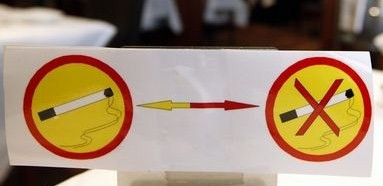 September 29, 2009 - Back in September 2008 a Federal Court ruled that the ban on smoking in public places in Geneva is null and void. Approximately one year later a ban on smoking in public places will return to Switzerland's Geneva canton after being approved in a referendum Sunday, September 27th. (Canton of Geneva is the westernmost canton or state of Switzerland, surrounded on almost all sides by France.)
September 29, 2009 - Back in September 2008 a Federal Court ruled that the ban on smoking in public places in Geneva is null and void. Approximately one year later a ban on smoking in public places will return to Switzerland's Geneva canton after being approved in a referendum Sunday, September 27th. (Canton of Geneva is the westernmost canton or state of Switzerland, surrounded on almost all sides by France.)
Geneva's residents voted 81.77 percent in favor of bringing back the smoking ban, with only 18.3 percent voting against.
A canton-wide smoking ban in public places was originally introduced on July 1, 2008, after the state government used a first referendum as grounds for pushing through the move. But the Federal Tribunal ruled three months later that the ban should not have been passed by the canton's lawmakers before the state's government enacted legislation. The law therefore had no legal basis, the tribunal found. Geneva's smokers were allowed to light up again at the end of September last year in bars and restaurants following the ruling.
A year on, the smoking ban will once again come into force after the canton's lawmakers passed legislation and had it overwhelmingly approved in Sunday's referendum. The new rules allow bar, hotel and restaurant owners to fit out special smoking rooms in their establishments, which the original ban did not.
Supporters of the ban are opposed to this compromise, however, and said Sunday they would appeal to the Federal Tribunal.
Reference: Geneva's smoking ban returns after one-year break, Agence France Presse (AFP), 9/27/2009.
Related news briefs: Switzerland - unified program to ban smoking in buildings open to the public..; Switzerland could join EU requiring sale of only self-extinguishing cigarettes...
Image - World Radio Switzerland, September 30, 2008..
Read more...
Ohio - state will provide NO funding for tobacco prevention and cessation programs...
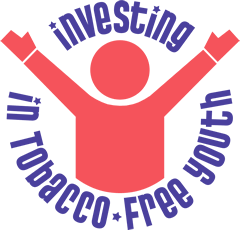 September 28, 2009 - Today, September 23rd Investing in Tobacco-Free Youth Coalition warned lawmakers about a series of recent events that puts Ohio’s kids in danger of becoming the next generation of smokers: All state funding for tobacco-prevention and cessation programming will be cut next fiscal year, new tobacco products that are kid-friendly and easy to conceal are being test-marketed in Ohio anf Statistics rank Ohio worst for underage sales of tobacco to minors.
September 28, 2009 - Today, September 23rd Investing in Tobacco-Free Youth Coalition warned lawmakers about a series of recent events that puts Ohio’s kids in danger of becoming the next generation of smokers: All state funding for tobacco-prevention and cessation programming will be cut next fiscal year, new tobacco products that are kid-friendly and easy to conceal are being test-marketed in Ohio anf Statistics rank Ohio worst for underage sales of tobacco to minors.
Though a line item for tobacco-prevention and cessation in the state budget shows $6 million for the second fiscal year (July 1, 2010-June 30, 2011), the administration has stated that they will not appropriate the money. The money has been designated for other purposes. Therefore, after June 30, 2010, all state-funded tobacco control services, including the Quitline, tobacco-prevention and cessation grants, and even enforcement of the Smoke-free Workplace Act, will cease to exist.
“Tobacco has a terrible impact on minority communities such as Asian Americans. We were helping to offset this impact with the state grant we received which supported our successful Asian American Youth Against Tobacco program. But with state funding cuts, we lost our grant, and now the people we serve are at risk,” said Michael Byun, executive director, Asian Services in Action, Inc. “We need continued funding to help vulnerable populations, like children, and populations that are specifically targeted by big tobacco, like minorities.”
In the Substance Abuse and Mental Health Services Administration’s (SAMHSA’s) recently released Annual Synar Report of Youth Tobacco Sales, Ohio ranked worst of all 50 states in rates of sales of tobacco to youth. While the national average of sales to minors is 9.9 percent, Ohio’s rate was 17 percent.
“We are privileged to receive state grant money right now so that we can provide some tobacco prevention and cessation services to our community. However, because of reduced funds we no longer have stand youth prevention teams that, among other things, used to check on retail establishments to make sure they weren’t selling tobacco to kids,” said Bruce Barcelo, program coordinator, Greene County Combined Health District. “Our cessation classes have waiting lists that are twice as large as the class. We can’t meet the need with current funding. Further cuts would be devastating to the people we serve.”
Ohio’s situation—no prevention programs and tobacco easier to purchase than average—leaves our children vulnerable to new products like the ones being test-marketed in Columbus. In the last month, Camel has released Camel Strips and Sticks. The Strips are mint-flavored and made to dissolve on your tongue, similar to a Listerine Breathstrip. The Sticks are thin and stick-shaped products that you place in your mouth and let dissolve. They come at a time when cookie and candy manufacturers are creating such products as Oreo Fun Stix, Crunch Stixx, and Butterfinger Stixx. Camel has been promoting these products through multiple mailings to Ohio residents for free products and “Buy One Get One Free” coupons in magazines to Ohio subscribers. In fact, tobacco manufacturers spend over $1.5 million a day marketing their products in Ohio alone.
On Tuesday, September 22nd flavoring in cigarettes became illegal because of legislation that was passed giving the FDA authority to regulate tobacco. This legislation does not, however, cover non-cigarette products like the new dissolvable tobacco, nor does it cover cigars, little cigars, smokeless, hookah or pipe tobacco. These products are often blatantly kid-friendly with bright-colored packaging and flavors like watermelon, bubble gum and cherry. Use of these products is growing while use of cigarettes is on the decline.
To help Ohio’s children and counteract this perfect storm of pressure to use tobacco, the Coalition is asking Ohio’s lawmakers to equalize the tax on other tobacco products (OTP), which includes all non-cigarette forms of tobacco, and use the revenue to fund tobacco-prevention and cessation programs. By raising the cigarette tax in 2003 and 2005 without raising the OTP tax, lawmakers created a loophole, making the OTP tax less than half the cigarette tax. Just by closing the loophole, the state can fund important tobacco-prevention and cessation programs, while reducing youth users of these products by 25 percent.
“Fortunately, an easy and popular solution can solve both problems. Tax all tobacco at the same rate and use the revenue to fund programs that help kids avoid tobacco and help addicted users quit,” said Shelly Kiser, director of advocacy for the American Lung Association in Ohio and co-chair of the Investing in Tobacco-Free Youth Coalition. “Polls show that 73 percent of likely voters in Ohio support the plan. It just makes sense.”
Unfortunately the Ohio governor, Ted Strickland opposes raising taxes on tobacco products at this time, spokeswoman Amanda Wurst said. Nor is the governor sympathetic to the call to put more money into anti-tobacco programs. (Ohio - don't cut spending on anti-tobacco programs it will cost the state much more in the long run..)
The Investing in Tobacco-Free Youth Coalition is dedicated to reducing the problem of non-cigarette tobacco products, called “other tobacco products,” use by Ohioans, especially our youth. The campaign is a coalition of over 60 businesses and health organizations including the American Lung Association, American Heart Association, American Cancer Society, Association of Ohio Health Commissioners, Campaign for Tobacco-Free Kids, Children’s Defense Fund, Cleveland Clinic, OhioHealth, Ohio State Medical Association, Tobacco Public Policy Center and Universal Healthcare Action Network (UHCAN) Ohio.
Asian Services In Action, Inc. is a community-based nonprofit organization based in Akron and Cleveland. The agency’s mission is to provide Asian American Pacific Islanders in Northeastern Ohio access to quality, culturally, and language appropriate information and services.
The Greene County Combined Health District is the lead agency for the Tobacco-Free Healthy Community Coalition which serves Greene, Clark, Champaign, Madison, Fayette, Clinton, Warren, Butler, Miami, Highland, Clermont, Adams and Brown counties.
Reference: Youth Tobacco Prevention Coalition Warns of New Threats to Kids, Press Release, Ohio-Tobacco-Free Youth Coalition, 9/23/2009.
Related news briefs: Camel Dissolvables - Columbus, OH - Tobacco mints a lot like candy?; Ohio - don't cut spending on anti-tobacco programs it will cost the state much more in the long run...
Read more...
Camel Dissolvables - Columbus, OH - Tobacco mints a lot like candy?
 September 28, 2009 - The "mints" in your child's pocket might give much more than a sugar high, the Federal Drug Administration is warning. They might provide a jolt of nicotine.
September 28, 2009 - The "mints" in your child's pocket might give much more than a sugar high, the Federal Drug Administration is warning. They might provide a jolt of nicotine.
R.J. Reynolds Tobacco Co. is test-marketing tobacco-infused mints in Columbus and two other markets. The company says the mints are for adults who want an alternative to cigarettes.
Critics warn that the so-called "dissolvable tobacco" products will appeal to youngsters. "It's in a colorful candy box and looks just like candy," said school nurse Eva Garchar of Cincinnati, who saw the Camel Orbs during a lecture at a nurses convention last spring. "All the people in the audience were disheartened by that."
Test-marketing of the mints started in the spring in Columbus bars, gas stations and markets. Two other flavored tobacco products, Camel Sticks and Camel Strips, joined them in the past few months.

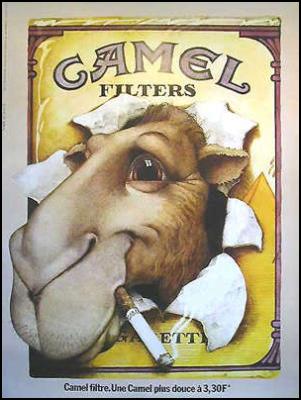 David P. Howard, R.J. Reynolds spokesman, said the company does not target children. "Those accusations are completely unfounded," he said. "It is a guiding principle of this company that youth should not use tobacco. These products are only for adult tobacco consumers."
David P. Howard, R.J. Reynolds spokesman, said the company does not target children. "Those accusations are completely unfounded," he said. "It is a guiding principle of this company that youth should not use tobacco. These products are only for adult tobacco consumers."
Deb Strouse, president of the Ohio Association of School Nurses, doesn't buy it. "It's something that looks like a treat, and we find it reprehensible that people put tobacco into these kinds of products," said Strouse, a nurse in the Columbus school district. "Even if they say they're not advertising to children, we know the products are attractive to children."
Like cigarettes, the orbs, strips and sticks can't legally be sold to anyone younger than 18.
A federal law that took effect this week bans the sale of candy- and fruit-flavored cigarettes, in part because of their attractiveness to children. But the ban doesn't extend to the mints and other candy-flavored tobacco products. (Flavored cigarettes are not even one percent of the cigarette market.)
The FDA began warning parents on its Web site this week that flavored tobacco products are "especially appealing to kids and can lead to a lifetime of tobacco addiction."
On Wednesday, September 23rd a coalition of anti-smoking activists said the products are another reason why state officials should continue to fund stop-smoking programs instead of diverting the money elsewhere. (Ohio - don't cut spending on anti-tobacco programs it will cost the state much more in the long run..)
Shelly Kiser, director of advocacy for the American Lung Association in Ohio, said the health risks of the products are not well-known. "With the past history of the tobacco industry, we know they might put all sorts of dangerous things in there," Kiser said.
R.J. Reynolds officials say the company doesn't slip in secret ingredients but uses "finely milled tobacco mixed with non-characterizing flavors and food-grade binders," according to the company's Web site.
Kiser said the products can hook children and adults on tobacco, which could lead to smoking. Also, the small size and minty flavor might encourage young people to take several at once, leading to a dangerous increase in their heart rate, Kiser said. "Nicotine is nicotine," she said. (Poison Control Centers - Camel Dissolvables - Nicotine Toxicity..)
Four local businesses selling the new products said they have sold few despite numerous promotions.
Reference: Tobacco mints a lot like candy? by James Nash and Kathy Lynn Gray, THE COLUMBUS DISPATCH, 9/25/2009.
Related news briefs: Ohio - state will provide NO funding for tobacco prevention and cessation programs..; Ohio - don't cut spending on anti-tobacco programs it will cost the state much more in the long run...
Read more...


To Provide Public Awareness
Purpose
About Us
Contact Us
2008 HIGHLIGHTS
TOPIX PAPERS - 2008 & 2009..
Archive
-
▼
2009 (1446)
-
▼
09/27 - 10/04 (28)
- Topeka, Kansas to ban public smoking indoors and ...
- Wisconsin - government anti-smoking programs cut f...
- New York City - Mayor Bloomberg pushing ahead t...
- FDA Center for Tobacco Products - draft document...
- Maternal Smoking - important risk factor in the de...
- FDA deflects challenge from Reynolds, Lorillard, o...
- Florida - no jobs for tobacco users..
- FDA - began collecting fees from nations tobacco c...
- Ontario - launches lawsuit against Canadian tobac...
- England - smoking rate falls again...
- United Kingdom - graphic warnings on cigarette pa...
- San Francisco - cigarettes cost a little more sta...
- Northern Mariana Islands - bans smoking in most pu...
- Korea - sets target to reduce smoking 10% in 5-y...
- Kazakhstan - total ban on smoking in public place...
- People's Republic of China celebrates its 60th an...
- Latvia - BAT shuts down tobacco production plant i...
- Croatia - backs down (loosens) smoking ban..
- Cuba Seeks World Heritage Designation for Cigar-Fa...
- Bulgaria - Cigarette excise duties will be increa...
- New Zealand - graphic warnings cigarette maker se...
- Geneva, Switzerland - ban on smoking in public pl...
- Ohio - state will provide NO funding for tobacco ...
- Camel Dissolvables - Columbus, OH - Tobacco mints ...
- Price of Skoal and Copenhagen pouches being reduce...
- Champix (Chantix) - the risks are greater then the...
- Malaysia - smoking limits your quality of life..
- Tennessee - steps up enforcement banning sale of ...
-
▼
09/27 - 10/04 (28)